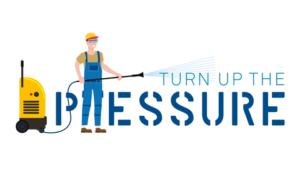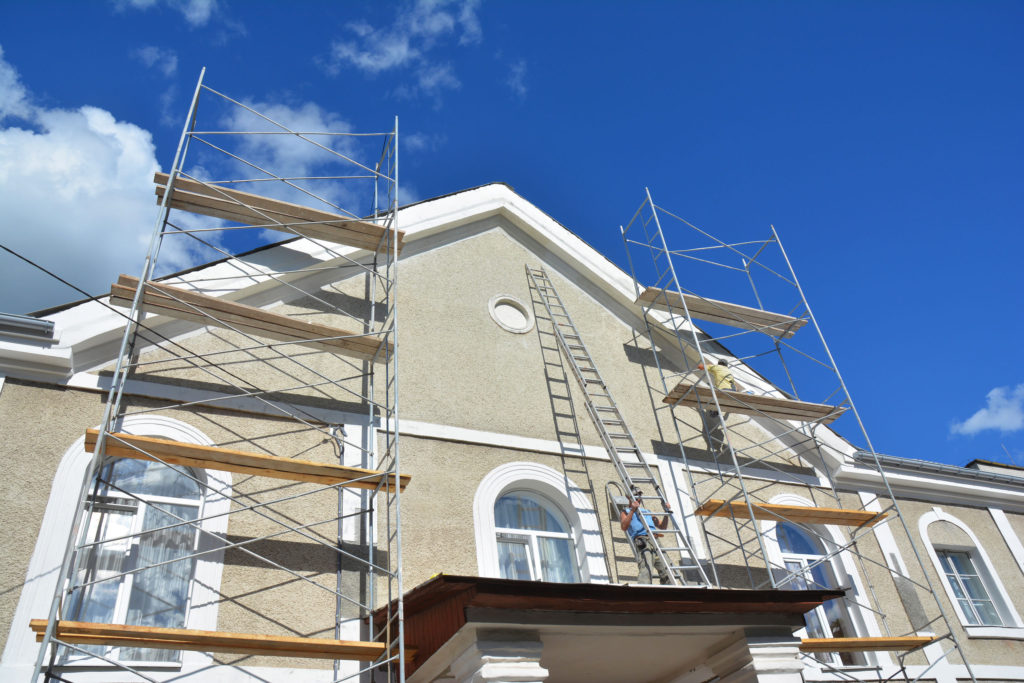
Do you have stucco on the exterior of your house? Have you noticed it is starting to look grimy? Normally, you would pressure wash your house, but stucco is a different material! Can you even pressure wash a stucco wall?
Good news. It is possible to pressure wash stucco, but you have to be more careful as it is easy to damage. Stucco is a decorative coating used on ceilings, statues, and exterior walls. Below is a step-by-step process on how to safely pressure wash stucco walls.
1. Look for Cracks
Before you start spraying your house, you will want to make sure everything is in order and that you are prepared to pressure wash stucco walls.
The first thing you should do is look for any damages or cracks in the stucco wall. Taking a few minutes to walk around and make sure everything looks fine will save you time and money.
If there are any cracks or damages in the stucco wall and you pressure wash it, the water will leak in and cause structural damage.
Fixing the Cracks
If you do have any cracks in the stucco wall, you will want to repair it.
Depending on the size of the crack, you should be able to repair it by yourself. If the damage is large and extensive, you may want to call a professional in.
If the crack is very small, applying a coat or two of acrylic latex paint will seal the crack. Make sure the paint matches your exterior.
For a larger crack (wider than 1/16 of an inch), you will first want to seal it with latex caulking. Allow the caulking to completely dry, then you can apply a coat of acrylic latex paint.
The patches should dry for at least a week before you pressure wash the stucco wall.
2. Analyze the Surrounding Area
Before pressure washing, it is important to get an idea of the surrounding area.
What is the landscape? Are there plants around? How about a garden? Is there concrete nearby?
Looking at the surrounding area is important because you do not want to cause any damage.
If you have to use detergent to clean stains, the runoff could harm the landscape nearby. Detergent runoff can stain concrete also.
The high pressure of a pressure washer can cause harm to nearby plants as well.
Taking a minute to survey the landscape will save you from causing damage.
3. Find the Proper Materials
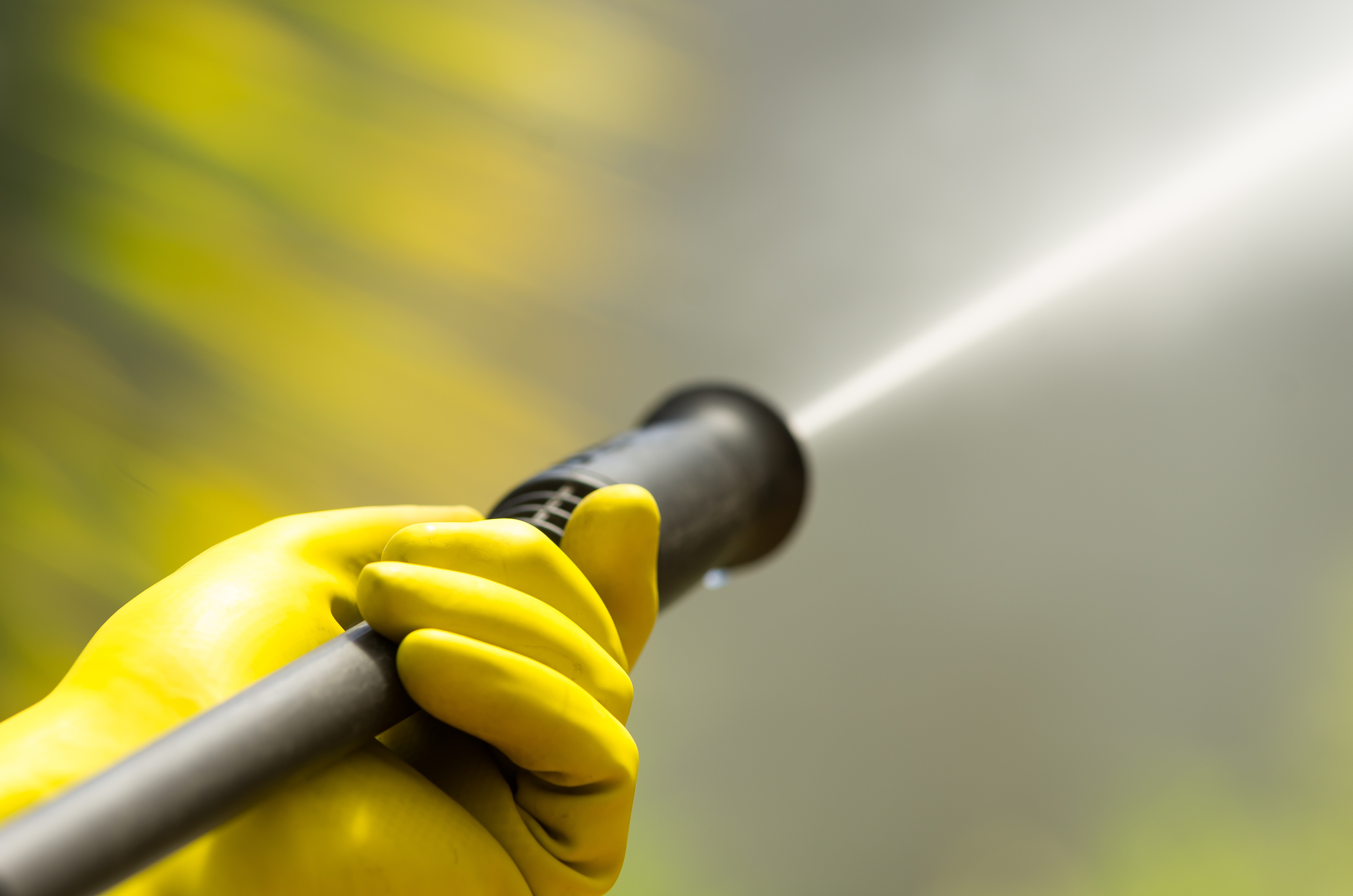
You will want to make sure you have all of the proper materials before you get started. The last thing you want is to be in the middle of pressure washing and realize you are missing something.
Here are some things you should have:
- Safety goggles
- Proper nozzle
- Pressure washer
- Gloves
- Detergent
- Scrub brush
- Garden hose
4. Test the Pressure Washer
Before you actually power wash the stucco wall, you will want to get a feel of the pressure washer.
Since stucco is fragile, it is important that you have a handle of the sprayer before you start spraying the stucco wall.
The pressure per square inch (PSI) of the pressure washer should be anywhere between 1500-2500 PSI. The wrong amount of pressure can damage the stucco wall.
First, you will want to attach the pressure washer to the water supply. Simply practice using the pressure washer to get a handle on how it feels.
You will also want to practice on a piece of stucco before pressure washing the whole wall. Find a spot of stucco that is not visible to test the power of the pressure washer. A spot behind a bush will work.
Once you are comfortable with the pressure washer, you can move to the next step.
5. Rinse the Stucco Wall
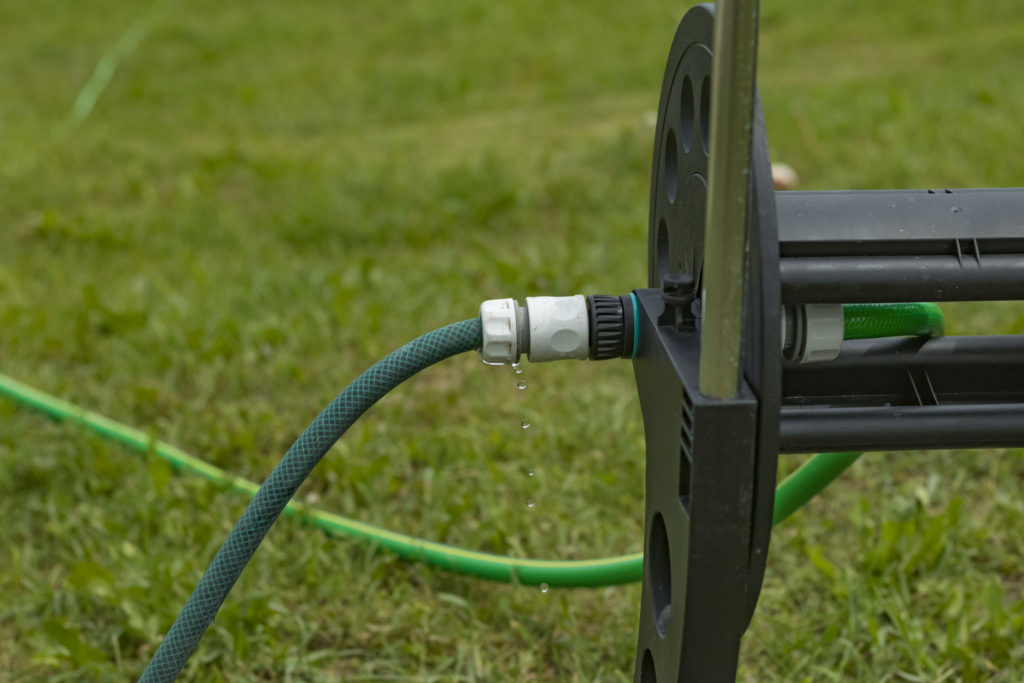
Before adding detergents or pressure washing, you will want to gently rinse the stucco wall.
Take a garden hose and rinse the wall from the bottom to the top to rinse off loose debris.
By cleaning off the stucco wall beforehand, you will be able to have a deeper clean with the pressure washer.
6. Apply Detergent
This step is not always necessary. Applying detergent to your stucco wall will help loosen up hardened dirt and clean any stains.
If your stucco wall does not have any stains or if you have a lot of plants around that could die from the detergent, you may want to skip this step.
Also, the wrong detergent can damage stucco, so make sure you are buying the correct kind before applying.
How to Apply the Detergent
Start from the bottom and work your way to the top.
It is best to work in small sections so you will not miss any spots. Also, you will want to layer the detergent to ensure you will not miss a spot.
The detergent must stay wet to work, so you will have to add fresh detergent water as you go.
Let the detergent set for five to ten minutes for it to properly work.
7. Scrub the Heavy Stains
Whether you used detergent or not, you will want to do this step.
If there are any heavy stains on your stucco wall, you will want to scrub them before pressure washing.
A rotating scrub brush will do the job and will be the easiest.
If there are any rust stains, you can apply a rust-removal detergent and scrub the stain away.
8. Spray the Stucco Wall
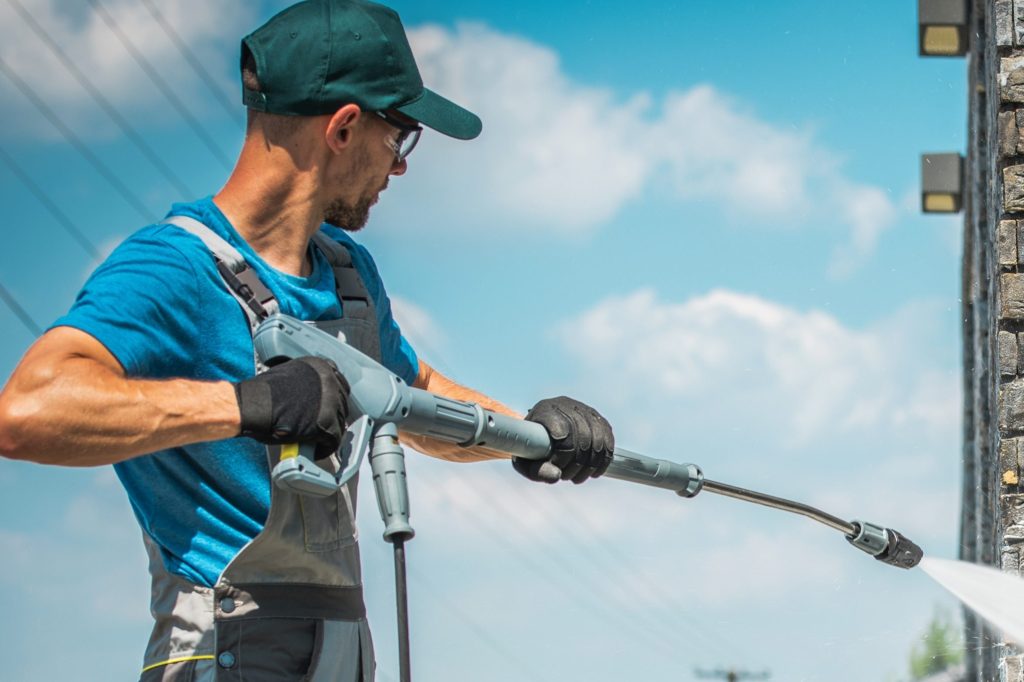
Now that the stucco is prepared, it is time to pressure wash.
The nozzle of the pressure washer should be set to the fan pattern. Having a lower pressure tip will help protect the stucco wall from the pressure washer.
Keep the nozzle at a 45-degree angle and keep the nozzle at least 24 inches away from the wall.
You will want to start at the top of the wall and work your way to the bottom. This way, the dirty water will run to the bottom and you will not have to re-wash everything.
9. Rinse the Foliage
After the stucco wall is completely clean, you will want to rinse the surrounding area.
Take the garden hose you used earlier and rinse off the plants and foliage nearby to dilute the chemicals.
Rinsing will also get rid of the dirt that you just sprayed off the stucco.
Congrats! You have successfully pressure washed your stucco wall!
How Often Should I Wash My Stucco Wall?
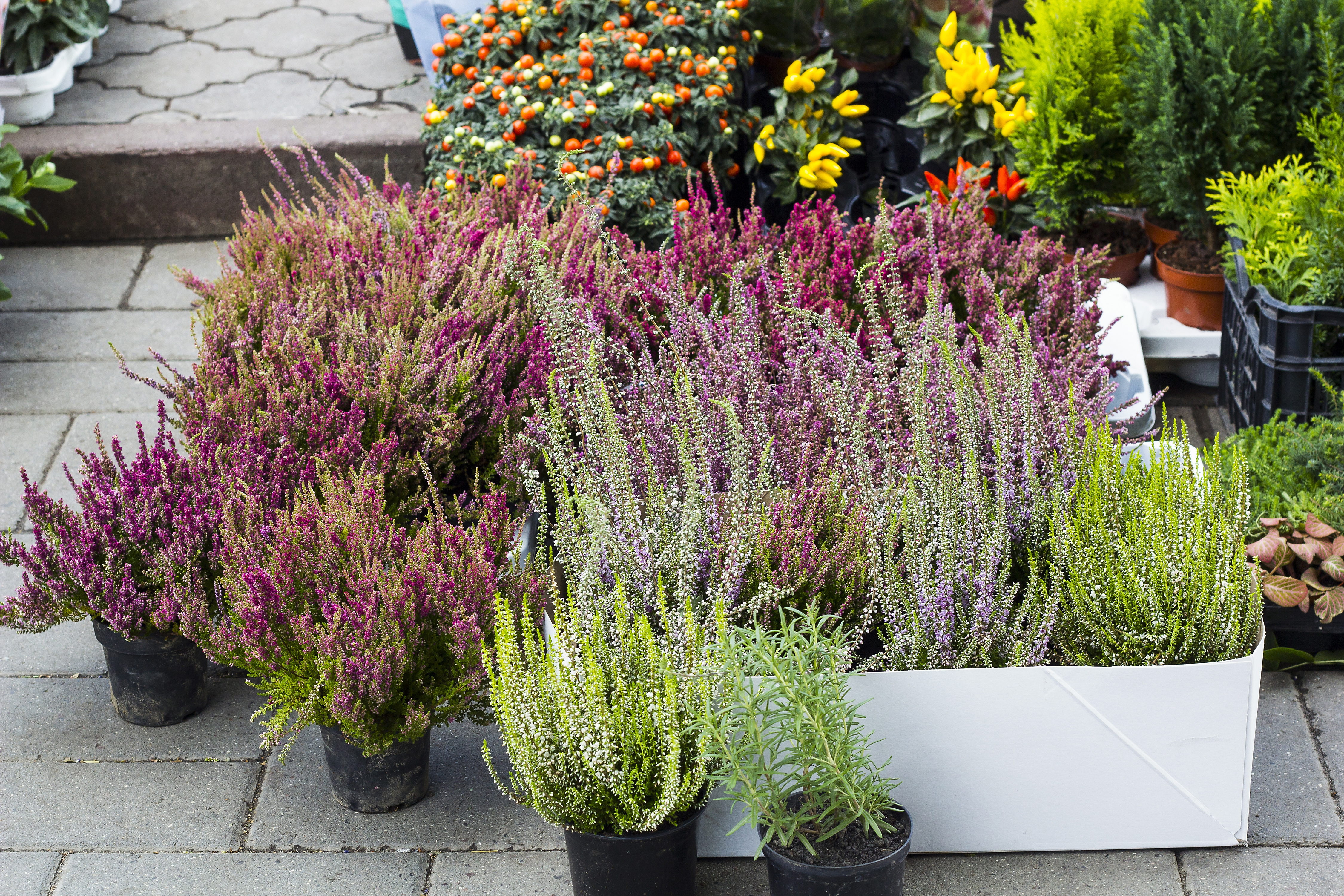
To keep the stucco clean and to maintain its appearance, you should wash your stucco walls two to three times a year.
Once a year, you should do a deep clean, where you remove all of the stains and grime that have built up over the year.
Additional cleanings can be done as needed.
Since stucco holds moisture, algae and mold tend to grow quickly on stucco walls. Pressure washing helps keep your walls clean and free from mold.
Signs It Is Time to Pressure Wash Your Stucco Walls
You may wonder when your stucco walls need to get cleaned. How often is often enough? Here are some signs it may be time to pressure wash your stucco walls:
- Mold/Algae: If you see dark spots on your wall, that is usually mold or algae. You will want to remove that as soon as possible so there is not any damage to your walls.
- Colder Weather: Around October or November (or sooner, depending on where you live) the weather starts to get cold. To prepare your house for winter, you will want to pressure wash your walls as a preventative.
- Warmer Weather: When the weather starts to warm up and Spring has sprung, it is a good idea to pressure wash your stucco walls. After a long, cold winter, your home is ready for a good pressure wash.
- Dirty Walls: You know your house. You can tell if your stucco walls are starting to look dirty. When you notice this, it is time for a pressure wash.
How Pressure Washing Stucco is Different from Other Materials
Stucco is a tricky material to pressure wash because it can break or crack easily. When pressure washing a house with stucco walls, there are different rules than when you are pressure washing a brick or stone exterior.
Here are a few examples of why pressure washing stucco is different from other materials.
- Different PSI
- Wider Spray Nozzle
- Further Distance
Different PSI
When pressure washing harder materials, such as brick, stone, vinyl, and steel, your pressure washer can have a PSI of 2,500-3000.
With a softer material like stucco, you have to stick to a lower PSI of 1,500-2,500.
Remember, PSI stands for pressure per square inch. With a softer material, you will want less pressure.
Wider Spray Nozzle
The spray nozzle on the pressure washer determines how much force the water comes out of the nozzle.
With harder materials, you would use a 15-degree wide spray nozzle.
With stucco, you will want to use a 25-30 degree wide spray nozzle. Having a wider nozzle will help spray the water in a more spread out manner, helping relieve the pressure on the stucco walls.
Further Distance
Along with having a lower PSI and a wider spray nozzle, keeping the nozzle further away from the stucco wall will help relieve the pressure placed on the wall.
When you are pressure washing a stucco wall, you want to have the nozzle at least 24 inches away from the wall, while you can be 18 inches away from the wall with harder materials.
What to Do If You Do Not Have a Pressure Washer?
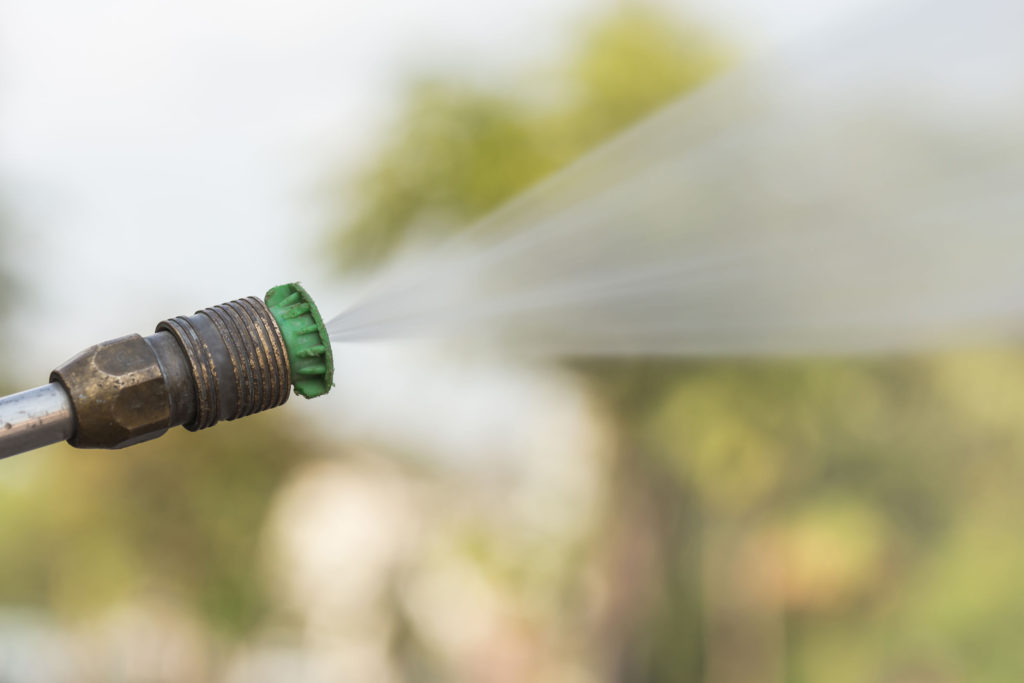
Do you not have access to a pressure washer? Or maybe, you just do not want to use one?
Here are some options for you:
- Garden hose
- Scrub the stains
- Make your own cleaner
- Pump sprayer
Garden Hose
Depending on how much water pressure you have, you could just rinse the side of your house with your garden hose.
You can buy different hose attachments that can act similarly to a pressure washer, making it more cost-efficient.
Rinsing your stucco walls frequently with a garden hose could help keep the walls clean. This trick works well while also adding stain remover tricks.
Scrub the Stains
After getting the wall wet, you can take a scrubbing brush and try to scrub at any stains or mold that you find on your walls.
For this to work, you will have to keep a close eye on your stucco walls so the stains and mold do not stay there for long. Scrubbing will only work if the stains and mold are new.
Make Homemade Cleaner
If you are not wanting to pressure wash your walls and use the detergent that goes along with it, you can make your own cleaner to help keep your stucco walls clean.
There are many recipes to make your own cleaner. You can use bleach, dish soap, vinegar, or other types of cleaner. Before putting anything on your walls, make sure it is safe to apply to your stucco walls.
Mixing the cleaner with stain scrubbing is a great way to keep your stucco walls clean.
Pump Sprayer
A pump sprayer is similar to a pressure washer, but it is cheaper and not as intense. It does not have the same amount of pressure that a pressure washer has, but it will give you a bit more than a garden hose.
Something that is great about a pump sprayer is that you can add your own mixture in it. So, you could add bleach to the water and spray that all along your stucco walls to clean it.
There are many ways and combinations for you to clean your stucco walls without having to use a pressure washer, but you may have the best results with a pressure washer.
We hope this post has been helpful and informative! Remember, stucco is a softer material, so you have to be more careful with it.
It is better to be safe than sorry, especially when it comes to your home.
